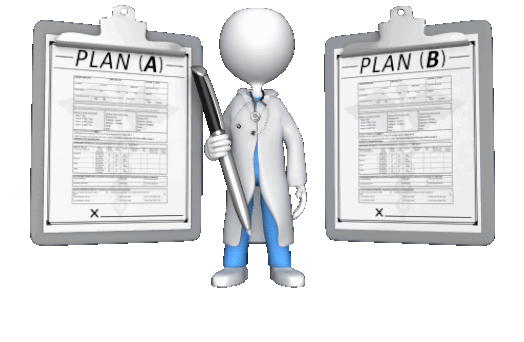8 Ps Process
We follow the famous ADDIE model with some modifications, where the content that needs to be created is customized to your needs or if the content already exists at your end, we offer solutions for all phases of the training or eLearning design and development cycle including execution and evaluation.
Select the headings below to learn more about each step in the design process.
-
Step 1: Plan
-
Step 2: Prepare
-
Step 3: Produce
-
Step 4: Pretest
-
Step 5: Promote
-
Step 6: Present
-
Step 7: Process
-
Step 8: Predict
<
>
1. Plan
During the planning phase of the course development, our instructional designer works closely with subject matter experts (SME) and members of the target audience to identify job requirements, as well as the knowledge and skills needed to meet those requirements (i.e. what the target learners do to meet performance expectations). This is similar to the analysis phase of the ADDIE.
.
Questions to ask are:
A TS4 Training Ltd. instructional designer participates in this review to help ensure that the SME has adhered to adult learning principles and that the course content supports learning outcomes.
All course are created using authoring tools and in accordance with the company standards that are mutually agreed with the client.
.
Questions to ask are:
- Who are your learners?
- What are their characteristics?
- How can they be motivated?
- What do they already know?
- What do they need to know?
- What are the constraints?
A TS4 Training Ltd. instructional designer participates in this review to help ensure that the SME has adhered to adult learning principles and that the course content supports learning outcomes.
All course are created using authoring tools and in accordance with the company standards that are mutually agreed with the client.
All Stages Support
We can help you through the various stages of the course designing and development process, to deliver a high-quality learning package and also create a project plan customised to your timelines, including strategy for launch and implementation.
Customised to Client Need
We also offer already existing ready to use training courses on various topics, which can be customised to highly engaging and creatively blended solutions for whatever industry you might belong to.
Feedback and Evaluation
We offer a unique continuous online follow-up assessment for the learner consisting of follow-up assessment and evaluation at 2, 6, 8 months or a yearly basis.
Online Review and Project Management Tools -optional
Online digital review tools and solutions are used by SME to facilitate and trail the progress.
In different stages of the design process, we provide a unique complete online eLearning design and development support for all phases of the training material or eLearning course development.
In different stages of the design process, we provide a unique complete online eLearning design and development support for all phases of the training material or eLearning course development.
Prepare
Following are a list of points to be finalised in these meetings.
During the preparing phase of the course development, the team (an instructional designer and subject matter expert) creates a draft course design plan (i.e., draft preliminary lesson plan).
This is similar to the design phase of the ADDIE. It is important that the design is approved bearing in mind the learning styles and accessibility concerns within a business
What is in this draft Course design plan (DP) : In this plan, the following are specified:
|
Outcome: |
Design Plan : (DP)
|
The design plan (i.e., preliminary lesson plan) is presented to a technical panel for review and comment – typically, in a project team meeting.
A TS4 Training Ltd. instructional designer participates in the review to help ensure the integrity of the course design plan. Subsequent to the review, the course developer incorporates changes that are incorporated into a final design plan (i.e., lesson plan). A TS4 Training Ltd. team approves the final design plan document (DP). The approved design plan (i.e., set of lesson plans) serves as a blueprint during the Development Phase of the project. |
Design Prototype:
|
The DPD is a crucial piece of document that can be provided to any e-learning instructional designer to create the course or self-paced web-based courses, the TS4 Training team creates a prototype course design during the Design Phase.
The purpose of the prototype is to demonstrate how the course development team intends to implement the design (e.g., writing style, visual treatment, and level of interactivity) and more importantly the way the client specific branding guidelines are to be incorporated. A technical panel and TS4 Training Ltd. instructional design staff review the prototype and provide feedback. The final Design prototype is approved and is used as a baseline for all development process moving forward. |
Produce
|
Getting the storyboard correct helps a great deal in saving time spent in actually developing the course.
Production consists of two areas:1. Product content linked to course outline and approved learning objectives
2. Produce storyboard - draft version of how the content will look and feel in the course. |
Outcome:
-Approve content of the course
-Approved storyboard of the course
-Version 1 course submitted
Storyboard of the course
The third phase, production or development, relates to the creation of the course using the approved prototype and Design Plan Document.This is similar to the development phase of the ADDIE.
This stage is where the blueprints from the design phase are used to create a storyboard of the course.
Once the storyboard is approved the next stage is the pushing of approved content onto the authoring software.
If the first two phases are completed without any delays this can make an immeasurable difference in this phase, as the course can then be developed very quickly.
During the course production phase, an instructional designer works closely with a subject matter expert(s) to create the storyboard, including the instructions, markers, triggers, layers, and other gamification or features.
This stage is where the blueprints from the design phase are used to create a storyboard of the course.
Once the storyboard is approved the next stage is the pushing of approved content onto the authoring software.
If the first two phases are completed without any delays this can make an immeasurable difference in this phase, as the course can then be developed very quickly.
During the course production phase, an instructional designer works closely with a subject matter expert(s) to create the storyboard, including the instructions, markers, triggers, layers, and other gamification or features.
Version 1 created and submitted
Pre-test
This can take a few brainstorming meetings, but the result can help fine tune the course for desired deliverable outcomes.
Outcome:
-Formative Assessment
-Summative Assessment
This is the final phase, and ensures that the materials have achieved the desired goals.
This is the technical and content review of the course, while checking for any inconsistencies.
This phase is similar to the implementation phase of ADDIE however adds on to the review process as well.
The ADDIE model is an iterative process of instructional design, meaning at each stage, the designer can assess the project's elements and revise them if necessary.
This is the technical and content review of the course, while checking for any inconsistencies.
This phase is similar to the implementation phase of ADDIE however adds on to the review process as well.
The ADDIE model is an iterative process of instructional design, meaning at each stage, the designer can assess the project's elements and revise them if necessary.
The pre-test consists of two parts:
This final phase is vital for the instructional design team because it provides data used to alter and enhance the design and content to ensure desired deliverable outcome by the course.
- formative and
- summative assessment
This final phase is vital for the instructional design team because it provides data used to alter and enhance the design and content to ensure desired deliverable outcome by the course.
Promote
How you project a course and promote it also plays a key role in success of an elearning course.
After the content is developed, it is then launched.
This stage allows the instructional designer to test all materials to identify if they are functional and appropriate for the intended audience, based on the platform, it will be implemented for example, an LMS.
A follow-up and final assessment is done after 6 weeks to assess the ROI of the course to the business.
This stage allows the instructional designer to test all materials to identify if they are functional and appropriate for the intended audience, based on the platform, it will be implemented for example, an LMS.
A follow-up and final assessment is done after 6 weeks to assess the ROI of the course to the business.
Process the outcome
How you project a course and promote it also plays a key role in success of an elearning course.
In this stage the analysis is conducted of what is working and what is not.
Are there any reasons why it is still not reaching the audience, are there any technical glitches in certain countries because of low bandwidth?
Are there any reasons why it is still not reaching the audience, are there any technical glitches in certain countries because of low bandwidth?
Predict
In this stage we review - what went well and predict future areas of improvement , and share learnings of this project with others.
|
A follow-up and final assessment is done after 6 -12 weeks to assess the ROI of the course to the business and provide future suggestions to the business of how they can improve the results. It consists of qualitative and quantitative data analysis:
How many people completed it - in future how many would be completing it based on this current data. What were the success factors, what could be improved for future elearning courses...etc. |











